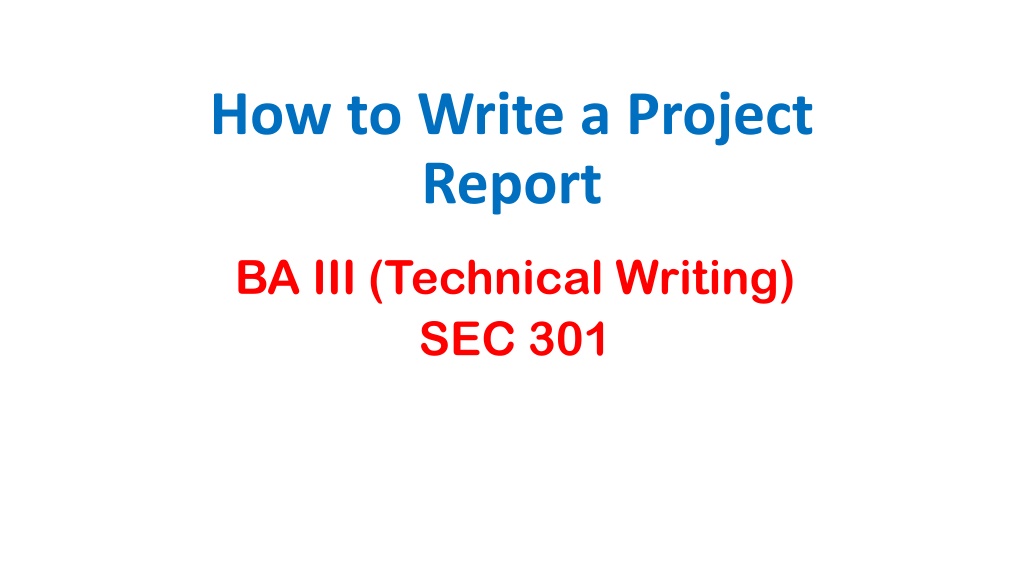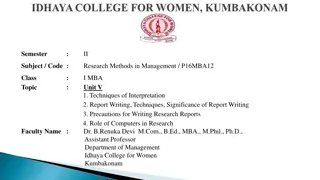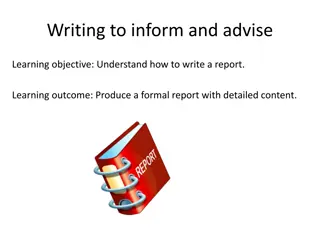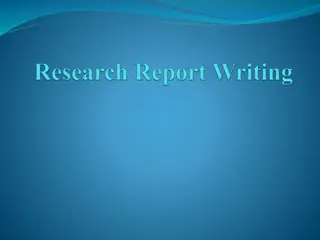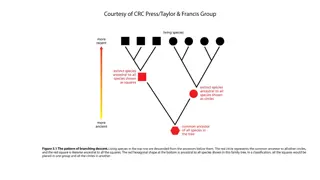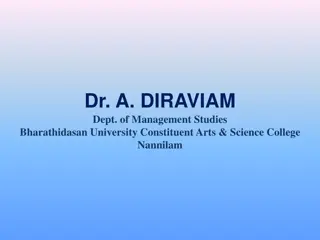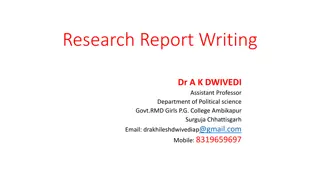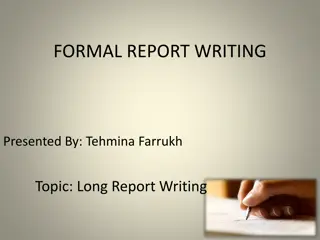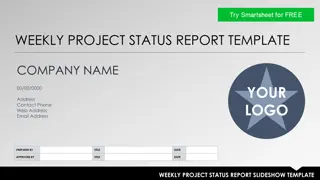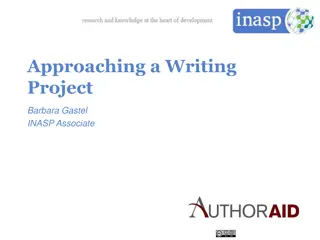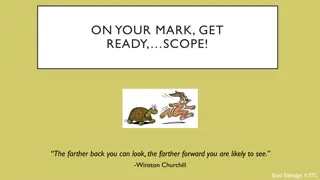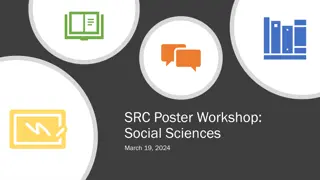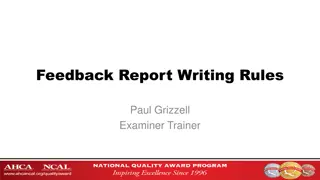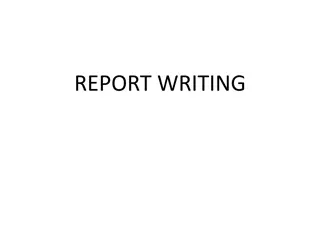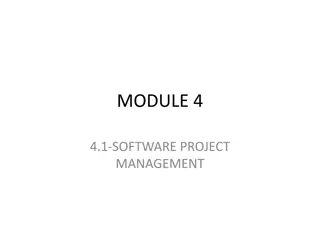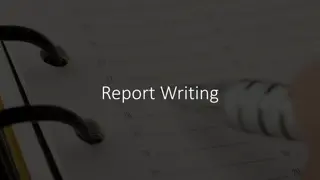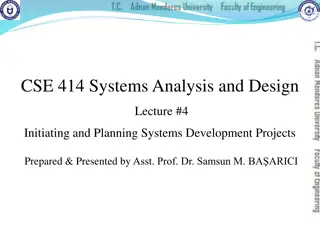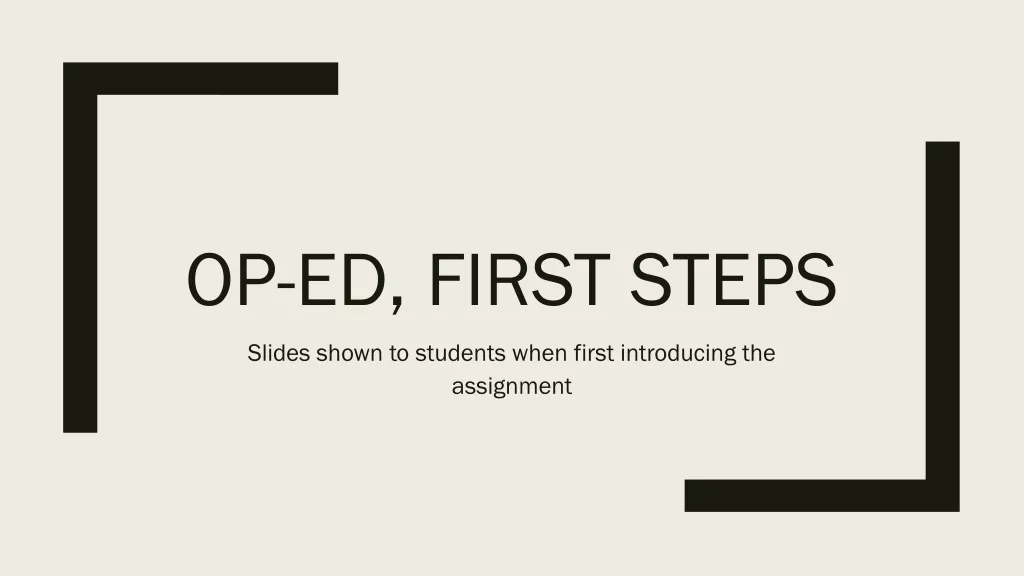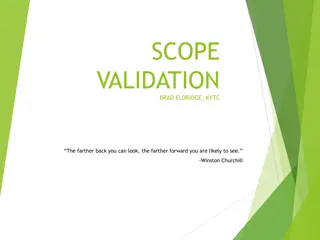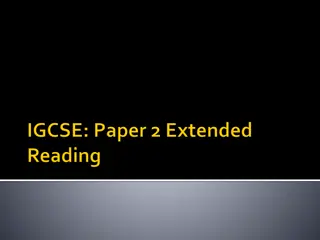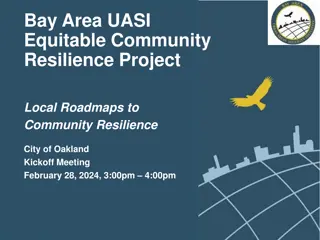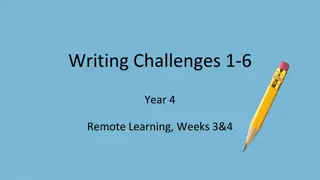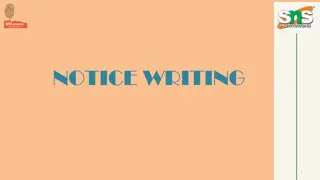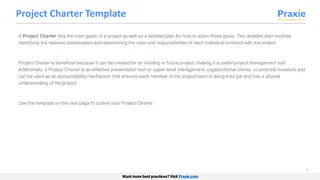Writing an Effective Project Report: Essential Steps and Tips
"Learn how to write a successful project report by following key steps such as defining objectives, understanding your audience, selecting the right format, gathering relevant data, and structuring your report effectively. These guidelines will help you create reports that are clear, impactful, and informative."
Download Presentation

Please find below an Image/Link to download the presentation.
The content on the website is provided AS IS for your information and personal use only. It may not be sold, licensed, or shared on other websites without obtaining consent from the author. Download presentation by click this link. If you encounter any issues during the download, it is possible that the publisher has removed the file from their server.
E N D
Presentation Transcript
How to Write a Project Report BA III (Technical Writing) SEC 301
How to Write a Project Report Writing a report is a useful opportunity to evaluate the project, document lessons learned, and add to your organization s knowledge base for future projects. Try these steps for writing better project reports.
How to Write an Effective Project Report 1. Decide the Objective Take some time to think about the purpose of the report. Do you need to describe, explain, recommend, or persuade? Having a clear purpose from the outset ensures that you stay focused, which makes it easier to engage your reader
2. Understand Your Audience Writing a formal annual report for your stakeholders is very different from a financial review. It is also useful to consider the personal communication style of the reader, for example, how do they write emails or structure documents? Adopting this technique will build rapport and make the reader more receptive to your ideas
3. Report Format and Type Before you start, check the report format and type. Do you need to submit a written report or deliver a presentation? Do you need to craft a formal, informal, financial, annual, technical, fact-finding, or problem- solving report? You should also confirm if any templates are available within the organization. Checking these details can save time later on!
4. Gather the Facts and Data Including engaging facts and data will solidify your argument. Start with your collaborative project site and work out as needed. Remember to cite sources such as articles, case studies, and interviews.
5. Structure the Report A report typically has four elements: Executive Summary. Your report will begin with the summary, which is written once the report is finished. As the first item the reader encounters, this is the most important section of the document. Introduction: Provide a context for the report and outline the structure of the contents.
Body: Its now time to put your writing skills to work! This is the longest section of the report and should present background details, analysis, discussions for consideration. Draw upon data and supporting graphics to support your position Conclusion: Bring together the various elements of the report in a clear and concise manner. Identify the next steps and any actions that your reader needs to take
6.Readability Spend some time making the report accessible and enjoyable to read. If working in Word, the Navigation pane is a great way to help your reader work through the document. Use formatting, visuals, and lists to break up long sections of text.
7. Edit The first draft of the report is rarely perfect so you will need to edit and revise the content. If possible, set the document aside for a few days before reviewing or ask a colleague to review.
